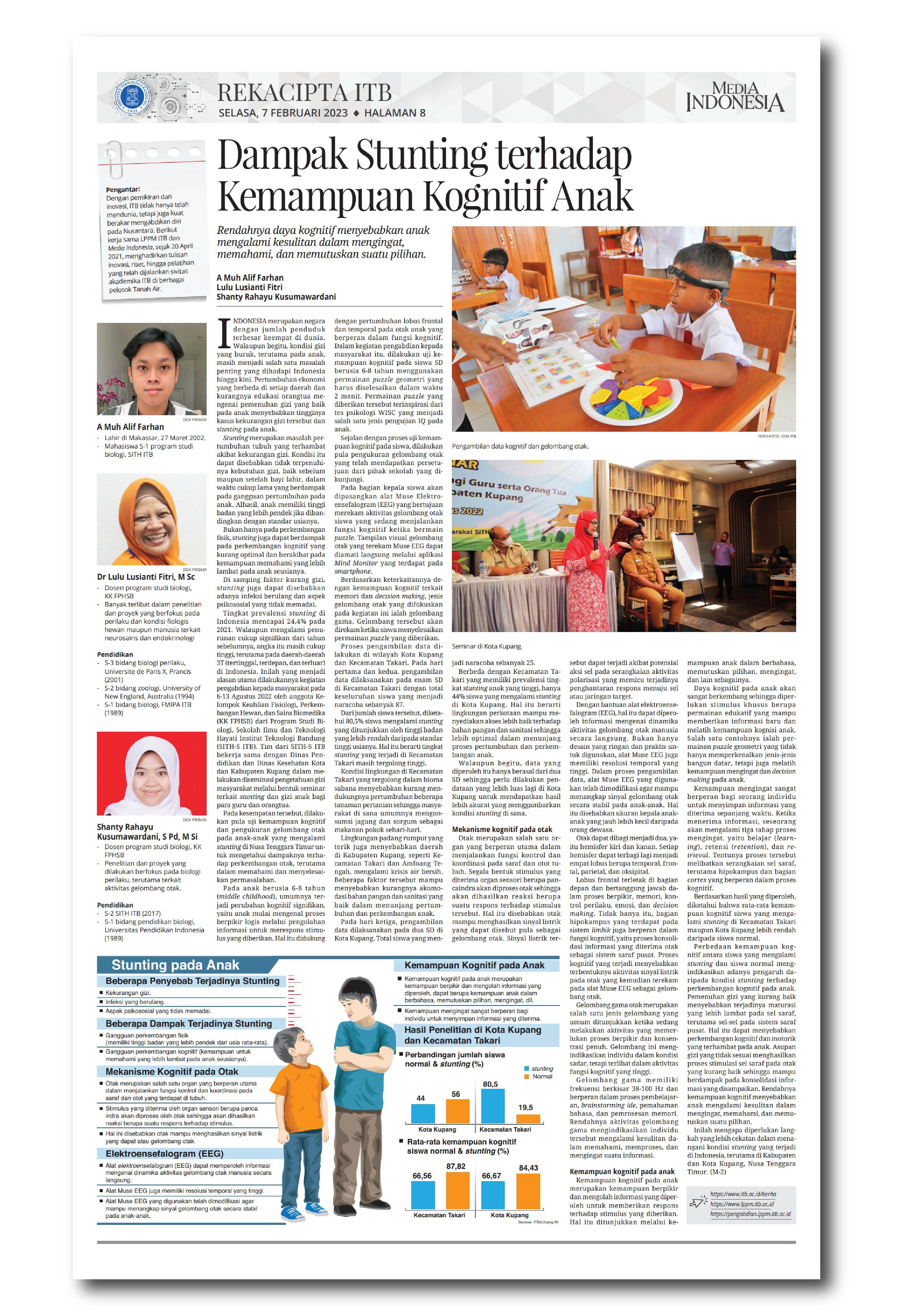Scientific Oration by Prof. Fatimah Arofiati Noor: Computational Devices and Electronic Materials for Advanced Development
By M. Naufal Hafizh, S.S.
Editor M. Naufal Hafizh, S.S.

BANDUNG, itb.ac.id - The Institut Teknologi Bandung (ITB) Professors Forum (FGB) held a Scientific Oration for Professors on Saturday (18/5/2024) in the West Hall of ITB Ganesha Campus. Prof. Dr. Fatimah Arofiati Noor, S.Si., M.Si., a Professor of Material Simulation and Electronic Devices from the Faculty of Mathematics and Natural Sciences (FMIPA) ITB, began the forum with an oration titled “Device and Electronic Material Computation for the Development of Advanced Devices and Materials.”
Electronic Device Simulation Computation on MOSFET Transistors
Transistors, vital components in the world of electronics, have evolved rapidly since their invention in the 1920s. "Almost all electronic devices use transistors. Transistors function like nerve cells that regulate the flow of energy to perform various functions," said Prof. Fatimah.
In the past, the world's first computer, ENIAC, used 18,000 vacuum tubes requiring a large space and high electricity consumption. Today, finger-sized microchips have replaced vacuum tubes with billions of transistors inside, offering durability, stability, and lower costs.
Her presentation focused on Field Effect Transistors (FETs), particularly Metal Oxide Semiconductor Field Effect Transistors (MOSFETs).
"One type of FET transistor is the MOSFET, characterized by an oxide material dielectric layer that prevents leakage current in the transistor," she explained.
This transistor operates by controlling the current flow from source to drain through a metal gate. However, as transistor sizes shrink, the silicon dioxide layer becomes thinner, increasing the risk of leakage currents that can impair device performance.
To address this issue, dielectric materials with high constants, such as Hf-Silicate, which offer good thermal stability and low electron mobility degradation, are used.
"Device computation is used to optimize MOSFET performance through transmittance and leakage current studies," she said.

The results show that reducing electron speed at the gate and increasing the oxide layer can suppress leakage current. As MOSFET scaling approaches its limits, the planar geometry structure is modified to cylindrical to better control the gate and reduce leakage current. Using gallium nitride as a semiconductor and simulations with the Landauer-Buttiker approach indicate that the oxide layer can effectively engineer device characteristics.
Graphene Growth Computation for Solar Cell Applications
Prof. Fatimah continued her presentation on graphene, a two-dimensional material composed of carbon atoms that is a focus in electronic material simulations. Graphene is transparent, conductive, and flexible, making it ideal as a transparent conductive electrode (TCE) in various applications such as LEDs, solar cells, and touch screens.
"Graphene is very suitable for application as a TCE because it offers low-cost fabrication, can be synthesized at low temperatures, and is more flexible," said Prof. Fatimah.
Her research uses the Chemical Vapor Deposition (CVD) method to grow high-quality graphene. However, the challenge in controlling graphene growth is the need for the right catalyst.

"We are trying to figure out which transition metals are suitable to combine with Cu as a catalyst in graphene growth," she said. Computational results show that Cu and Ni catalysts produce optimal few-layer graphene, with an optimal Ni fraction of 18.75%, and the number of few-layer graphene exceeding three layers for best performance in TCE and solar cell applications.
The urgency of electronic device and material simulation cannot be underestimated. "Transistors, solar cells, diodes, and other electronic devices are the heart of modern devices," she said.
Designing, optimizing, and simulating the performance of these devices is essential to achieving high efficiency and quality. On the other hand, material computation allows scientists to predict the fundamental properties of a material and study material processes under extreme conditions that cannot be done in a laboratory.
Reporter: Muh. Umar Thoriq (Food Engineering, 2019)

.jpg)
.jpg)
.jpg)
.jpg)
.jpg)
.jpeg)
.jpg)

.jpg)